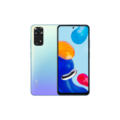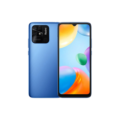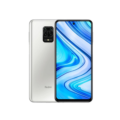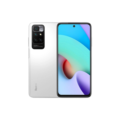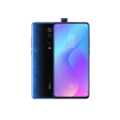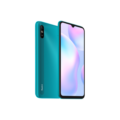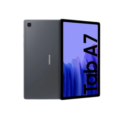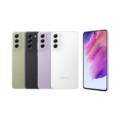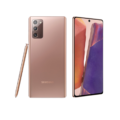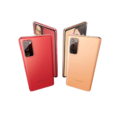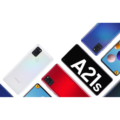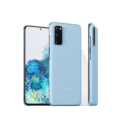Redmi Note 8 Pro Harga Malaysia
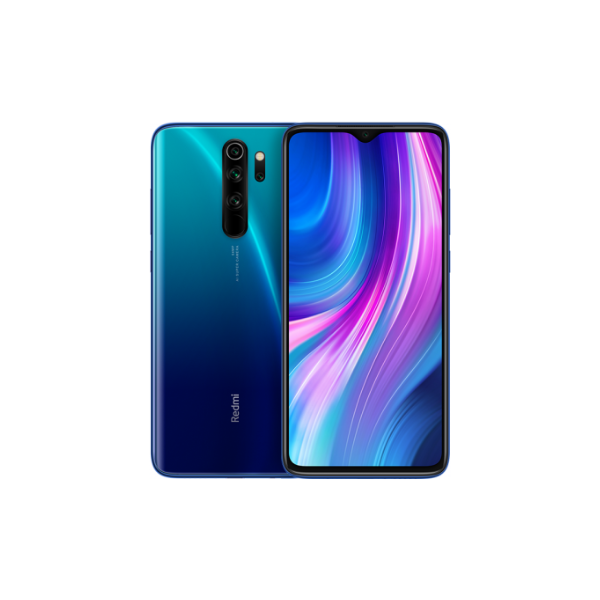

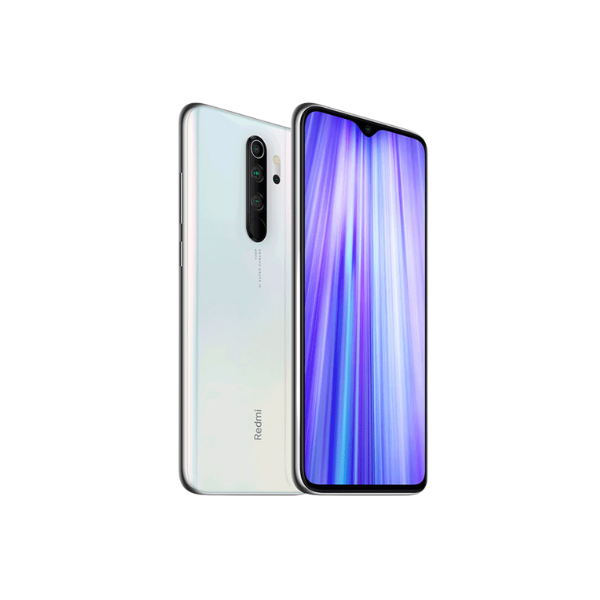
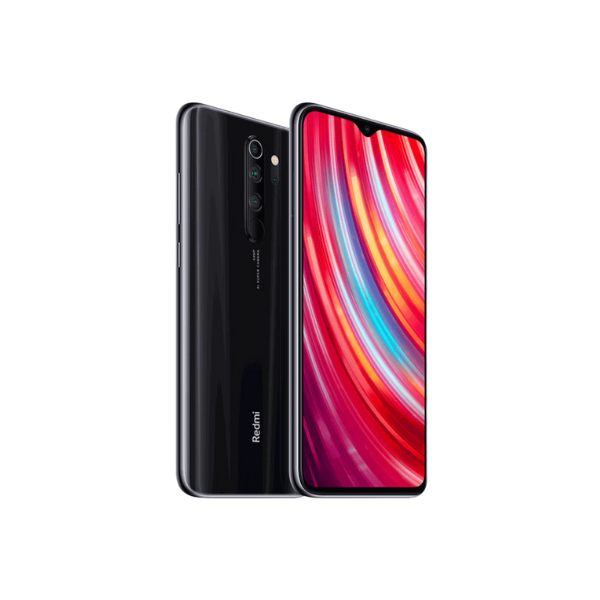
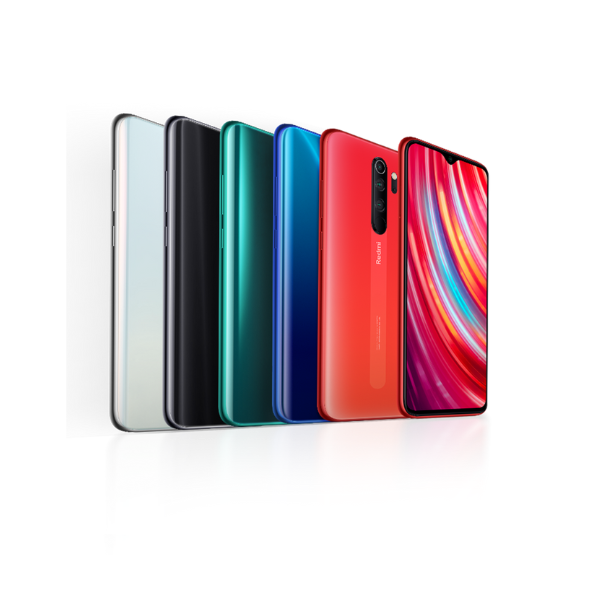
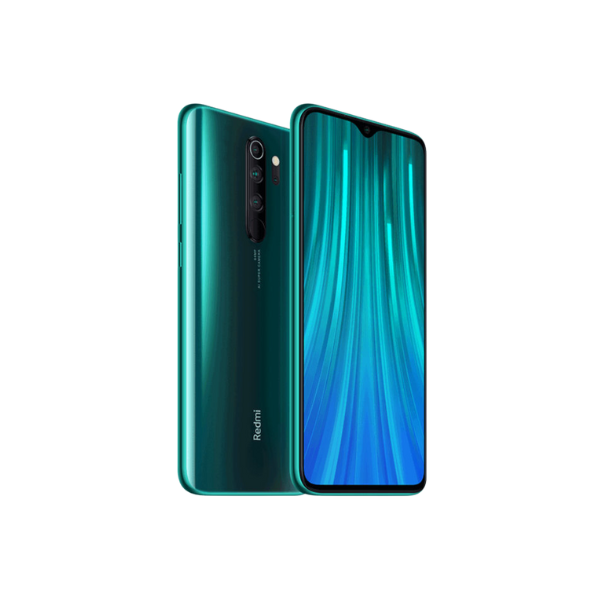
- CPU: Mediatek Helio G90T (12nm)
- RAM: 4 GB, 6 GB, 8 GB
- Storage: 64 GB, 128 GB, 256 GB
- Display: IPS LCD
- Camera: 64 MP Quad Camera
- OS: Android 9.0 (Pie), MIUI 12.5
- AnTuTu Total Score: 340.787 (v9)
Redmi Note 8 Pro Harga Malaysia Spesifikasi Malaysia
General
| Device Type | Smart Phone |
| Model | 2015105, M1906G7I, M1906G7G |
| Announced | 29 August, 2019 |
| Released | 24 September, 2019 |
| Status | Available |
| Price | RM799 - RM1,099 |
Design
| Type <strong>Design Type</strong> called form factor refers to a mobile phone's size, shape, and style as well as the layout and position of major components of phone. There are three major form factors seen in mobile phones => bar phones, folding phones and sliding phones. | Bar |
| Dimensions | 161.4 x 76.4 x 8.8 mm (6.35 x 3.01 x 0.35 in) |
| Weight | 200 g (7.05 oz) |
| Body Type | Glass front (Gorilla Glass 5), glass back (Gorilla Glass 5), plastic frame |
| Colors | Black, Red, Blue, White, Deep Sea Blue, Midnight Blue, Electric Blue, Twilight Orange |
Network
| 4G Network | 1, 3, 5, 7, 8, 40, 41 |
| SIM <strong>SIM</strong> (Subscriber Identity Module) is a small card that contains mobile network subscriber's account information. This allows the phone using the card to attach to a mobile network. The SIM card is most commonly associated with GSM and UMTS mobile networks. Moving a SIM card from one phone to another allows a subscriber to switch mobile phones without having to contact their mobile network carrier. SIM cards can also be used by a phone to store limited amounts of data, such as phone numbers and text messages. | Nano SIM |
| Dual SIM | dual stand-by |
Display
| Display Type <strong>Display Technology => </strong> A number of display technologies and types used in mobile phones => TFT (Thin Film Transistor), IPS (In-Place Switching), OLED (Organic Light Emitting Diode), AMOLED (Active-Matrix Organic Light-Emitting Diode), Super AMOLED (an even advanced version of AMOLED), Resistive Touchscreen (Resistive touchscreens contain two layer of conductive material with a very small gap between them which acts as a resistance), Capacitive Touchsceen (Capacitive touchscreen technology consists of a layer of glass coated with a transparent conductor) | IPS LCD |
| Size | 6.53 inches, 104.7 cm2 (~84.9% screen-to-body ratio) |
| Resolution | 1080 x 2340 pixels, 19.5:9 ratio |
| Display Colors <strong>Display Colors</strong> is refers to the number of different shades of colors that the screen is capable of displaying => 64K colors, 256K colors and 16 million colors, Obviously 16M is highest available range of colors and better than others. | 16 Millions Colors |
| Pixel Density <strong>Pixel Density (PPI)</strong> is refers to the concentration of pixels on a particular display, measured in pixels per inch (ppi). Pixel density is calculated by dividing the diagonal pixel resolution of a display by its diagonal size, higher pixel density better display quality. | (~395 ppi density) |
| Touch Screen | Yes, Multitouch |
| Display Protection <strong>Display Protection => </strong> Gorilla Glass is a special alkali-aluminosilicate glass shield with exceptional damage resistance that helps protect mobile displays from scratches, drops, and bumps of everyday use, It is always better to go for a smartphone with Gorilla Glass for that added protection and peace of mind. | Corning Gorilla Glass 5 |
| Features |
HDR 500 nits (typ) |
Camera
| Rear Camera <strong>Camera</strong> is able to capture photographs and usually videos, The most important characteristics of a camera are the resolution (measured in megapixels), lens focus type (fixed or automatic), higher megapixel cameras are known to capture higher quality photos, but not always a good measurement of the photos quality. |
Quad Camera 64 MP, f/1.9, 26mm (wide), 1/1.72", 0.8µm, PDAF 8 MP, f/2.2, 13mm (ultrawide), 1/4.0", 1.12µm 2 MP, f/2.4, (macro) 2 MP, f/2.4, (depth) |
| Front Camera | 20 MP, f/2.0, (wide), 1/3", 0.9µm |
| Image | 2160p |
| Video | 4K@30fps, 1080p@30/60/120fps, 720p@960fps, gyro-EIS |
| Camera Features | LED flash, HDR, panorama |
Software
| Operating System <strong>OS => </strong> Every computer system run on a base software called Operating System (OS). Operating System controls all basic operations of the computer (such as smartphone, PDAs, tablet computers and other handheld devices). The Operating System allows the user to install and run third party applications (apps), apps are used to add new functionality to the device. | Android 9.0 (Pie), upgradable to Android 11 |
| User Interface <strong>UI</strong> or user interface of a device is the look and feel of the on-screen menu system. How it works, its color scheme, how it responds to button presses, all of these things are part of the user interface. | MIUI 12.5 |
Hardware
| Chipset <strong>Chipset</strong> is a group of integrated circuits designed to perform one or a more dedicated functions, often with real time computing constraints, Popular smartphones are equipped with more advanced embedded chipsets that can do many different tasks depending on their programming. | Mediatek Helio G90T (12nm) |
| CPU <strong>CPU</strong> (Central Processing Unit) mostly known as processors, CPU processes instructions in order to carry out certain functions that make your device operate properly. Processors are often described as the brain of computers, smartphones and tablets, Smartphones and tablets rely on processors to carry out their every task, Processors are an incredibly important factor in selecting any type of computing device, including your smartphone. | Octa-core (2x2.05 GHz Cortex-A76 & 6x2.0 GHz Cortex-A55) |
| GPU <strong>GPU</strong> (Graphics Processing Unit) is a single-chip processor designed to rapidly manipulate and alter memory to accelerate the creation of images in a frame buffer intended for output to a display, This includes things such as lighting effects, object transformations, and 3D motion. | Mali-G76 MC4 |
| RAM (Memory) <strong>RAM</strong> (Random Access Memory) is a type of computer memory that can be accessed randomly, any byte of memory can be accessed without touching the preceding bytes that allows information to be stored and accessed quickly from random locations. RAM is the most common type of memory found in computer systems, smartphones, tablets and other electronic devices. | 4 GB, 6 GB, 8 GB |
| Internal Storage <strong>Internal Storage</strong> is a data storage space (flash memory) mostly used in smartphones, tablets and other electronic devices where operating system, apps, music, photos, videos, files and other user data Is stored. | 64 GB. 128 GB, 256 GB |
| Card Slot <strong>Memory Card Slot</strong> is a special slot for inserting a memory card. Memory cards allow you to expand the phone's built-in memory, A memory card (sometimes called a flash memory card or a storage card) is a small storage medium used to store data such as text, pictures, audio, and video, for use on small, portable or remote computing devices such as mobile phones, mp3 players, digital cameras. | microSDXC (uses shared SIM slot) |
| Sensors <strong>Sensors</strong> are electronic components that detects and responds to some type of input from the physical environment. The specific input could be light, heat, motion, moisture, pressure and location, The output is generally a signal that is converted to use in computing systems, a location sensor, such as a GPS receiver is able to detect current location of your electronic device. | Fingerprint (rear-mounted), accelerometer, gyro, proximity, compass |
Battery
| Battery Type <strong>Battery Type => </strong> Cell phones run on various kinds of batteries depending on the manufacturer, phone size or shape and features. There are basically four types of cell phone batteries => Lithium Polymer, Lithium Ion, Nickel Metal Hydride and Nickel Cadmium. | Li-Poly (Lithium Polymer) |
| Placement | non-removable |
| Capacity <strong>Battery Capacity</strong> is a measure (typically in Amp-hr) of the charge stored by the battery, and is determined by the mass of active material contained in the battery. The battery capacity represents the maximum amount of energy that can be extracted from the battery under certain conditions. | 4500 mAh |
| Charging | 18W wired |
Connectivity
| Bluetooth <strong>Bluetooth</strong> is a wireless communications technology for exchanging data between mobile phones, headsets, computers and other network devices over short distances without wires, Bluetooth technology was primarily designed to support simple wireless networking of personal consumer devices. | 5.0, A2DP, LE |
| Wi-fi <strong>Wi-Fi</strong> is a popular wireless networking technology using radio waves to provide high-speed network connections that allows devices to communicate without cords or cables, Wi-Fi is increasingly becoming the preferred mode of internet connectivity all over the world. | Wi-Fi 802.11 a/b/g/n/ac, dual-band, Wi-Fi Direct |
| Wi-fi Hotspot | |
| USB | USB Type-C 2.0 |
| GPS <strong>GPS</strong> The Global Positioning System is a satellite-based radio navigation system, GPS permits users to determine their position, velocity and the time 24 hours a day, in all weather, anywhere in the world, In order to locate your position, your device or GPS receiver must have a clear view of the sky. | GPS, GLONASS, GALILEO, BDS |
| NFC <strong>NFC</strong> (Near field communication) is a set of standards for smartphones and similar devices to establish peer-to-peer radio communications with each other by touching them together or bringing them into proximity, usually no more than a few inches. | |
| Wireless Charging <strong>Wireless Charging</strong> (Inductive Charging) uses an electromagnetic field to transfer energy between two objects. This is usually done with a charging station. Energy is sent through an inductive coupling to an electrical device, which can then use that energy to charge batteries or run the device. | No |
Media
| Loudspeaker | Yes |
| Handsfree | 3.5mm jack |
Di sini, kami akan memberikan ulasan mengenai Xiaomi Redmi Note 8 Pro, bagaimana prestasinya pada tahun 2024, dan adakah telefon ini masih berbaloi untuk dibeli pada tahun 2024 sahaja.
Jika anda sedang memikirkan untuk membeli, terutamanya dengan persaingan jenama-jenama bagi telefon pintar peringkat rendah dan sederhana, maka anda telah datang ke tempat yang tepat di sini.
Redmi Note 8 telah wujud untuk beberapa masa, ia pertama kali dilancarkan pada pertengahan tahun 2019, dengan kemunculan Redmi Note 8 Pro pada akhir tahun 2019 di pasaran AS dan Eropah.
Pada tahun 2019, peranti ini dianggap pilihan yang baik bagi telefon bajet rendah, mungkin ia tidak terbaik dalam semua aspek dan mungkin dilampaui oleh beberapa pilihan lain dan jenama pesaing, tetapi ia ada untuk memberikan pilihan yang baik bagi peranti sederhana.
Reka Bentuk
Redmi Note 8 Pro hadir dengan reka bentuk yang elegan, namun selepas kami menerima pembungkusan kami dan melihatnya di tangan kami, Note 8 Pro agak besar.
Cukup untuk dikatakan, ia mempunyai reka bentuk yang licin, yang telah diubah sepenuhnya dalam estetika Note 7, untuk kelihatan lebih elegan dan mempunyai kehebatan.
Ia mempunyai belakang kaca melengkung, dengan varian Halo putih, dan akan kelihatan elegan, berbanding dengan banyak telefon pintar kelas premium lain dalam jenama tersebut.
Ia adalah telefon yang agak besar dengan berat 200 gram, dilindungi oleh Gorilla Glass 5, dengan kaca hadapan dan belakang yang licin.
Paparan
Untuk paparan, Redmi Note 8 Pro hadir dengan IPS LCD, tetapi belum lagi paparan AMOLED yang dibanggakan oleh banyak telefon pintar lain.
Tidak ada yang salah dengan IPS LCD yang lebih lama, tetapi jika anda mengharapkan kualiti paparan yang lebih baru dan lebih tajam, ia mungkin tidak terbaik dalam kelasnya.
Walau bagaimanapun, ia tetap mempunyai paparan berkualiti tinggi, baik dalam kecerahan dan menawarkan warna yang hebat, serta kedalaman paparan. IPS LCD juga merupakan sebab mengapa telefon ini tidak menggunakan pemindai cap jari skrin di bawah paparan, baik atau buruk.
Kamera
Apabila membicarakan mengenai kamera, titik jual Redmi Note 8 adalah kameranya. Dengan harga rendah, anda mempunyai kamera utama belakang 64 MP yang baik, lengkap dengan sensor Samsung GW1 sebagai kamera belakang empat kali ganda.
Ia mempunyai kamera sudut ultralebar 8MP, kamera makro dengan 2Mp, dan kamera pengekalan kedalaman.
Untuk kamera selfie, ia menawarkan kamera selfie 20 MP. Dengan mengejutkan, ini adalah prestasi yang cukup hebat untuk sisi kamera, dan ia diiklankan sebagai kamera yang hebat dan responsif.
Xiaomi berjaya dalam kamera dan peningkatan pengoptimuman dalam tahun-tahun sebelumnya. Sebagai kesimpulannya, bagi siri peranti sederhana, Redmi Note 8 Pro mempunyai ciri kamera yang cukup baik.
Perisian
Perisian yang digunakan ialah Android 9.0 Pie, dengan MIUI global 10.4. Seperti yang dijangkakan daripada telefon yang sudah sekurang-kurangnya tiga tahun, ia hanya mempunyai perisian terhad Android 9.0. Cukup baik untuk menjalankan banyak permainan video dan aplikasi moden, tetapi kadang-kadang mungkin terasa lambat, tetapi setidaknya ia disertai oleh spesifikasi yang kuat untuk menyokongnya.
Prestasi
Note 8 Pro hadir dengan cip MediaTek, cip Helio G90T untuk menjadi tepat. Dilengkapi dengan 6 GB RAM dan memori sehingga 128 GB penyimpanan, ia cukup kuat untuk digunakan sebagai telefon permainan, walaupun selepas diuji dengan banyak telefon peringkat sederhana moden dan terkini.
Cip MediaTek masih bertahan, terutama kerana disokong oleh IPS LCD yang lebih lama tetapi cukup kuat, dengan resolusi maksimum piksel 2340 x 1080.
Bateri
Kapasiti bateri telefon ini adalah 4,500 mAh.
Harga
Harga Redmi Note 8 Pro bermula dari RM799 untuk RAM 4 GB dan penyimpanan dalaman 64 GB. Beberapa caj tambahan untuk memori tambahan hingga RM1,099.
Anda boleh melawat laman web rasmi di Mi Malaysia
Soalan Lazim
Berapa lama bateri Redmi Note 8 Pro tahan?
Menurut ujian, baterinya tahan sekurang-kurangnya 12 jam 50 minit.
Adakah Redmi Note 8 Pro sesuai untuk bermain permainan?
Untuk bermain permainan santai, telefon ini berfungsi cukup baik, tetapi untuk permainan moden yang sukar, mungkin ada kelajuan lembap dan tersentak.
Adakah Redmi Note 8 Pro tahan air?
Ia bukan telefon tahan air, sekurang-kurangnya ia tidak diumumkan secara rasmi oleh Xiaomi.
Keputusan Akhir, dengan spesifikasi Redmi Note 8 Pro yang menjanjikan untuk peringkat bajet rendah hingga sederhana, ia adalah salah satu pilihan bagi telefon pintar peringkat rendah hingga sederhana.
Walau bagaimanapun, jika anda mencari telefon pintar bajet peringkat sederhana, anda mungkin mempertimbangkan untuk membeli Note 9 versi terbaru, atau dengan Poco M3 atau X3, yang mempunyai harga yang lebih kurang sama atau sedikit lebih mahal, tetapi memberikan lebih banyak kualiti dan prestasi.

